
The middle of No and Where: Johnston Island and the US Air Force’s nuclear anti-satellite weaponby Dwayne A. Day
|
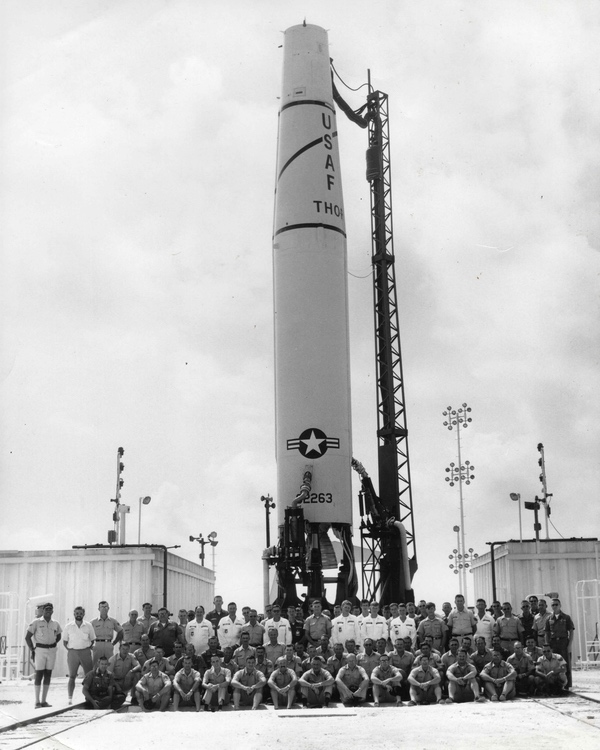 A nuclear-armed Program 437 ASAT. The weapon was carried into space atop a Thor missile. The program was operational until the early 1970s. (credit: USAF) |
Johnston Island—also Johnston Atoll—is located several hundred kilometers southwest of the Hawaiian Islands. It has been abandoned since 2005 and an image on Google Earth shows only one structure remaining on the island, which is being overgrown with scrub. However, at one time, much of the land that was not covered with a runway was covered with living and work structures. The US Navy first started construction on the island in the 1930s and it served as a naval airfield during World War II. The Air Force added facilities in the 1950s including missile launch capabilities, and in 1962 it was the site of the Operation Fishbowl series of high-altitude nuclear tests.
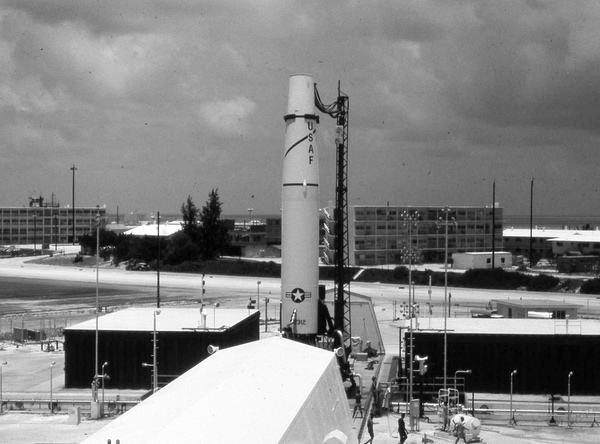 On Johnston Island, everything was near everything else. The launch pads were very close to the barracks. (credit: Joseph T. Page II) |
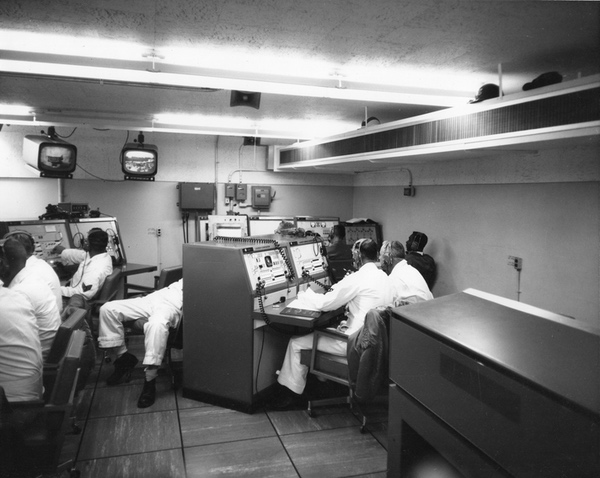 There were two active pads for the Program 437 Thor missiles. Launch control was dangerously close to the pads. One person here did not want to be photographed. (credit: USAF) |
Also in 1962, Johnston Island became the site for the Air Force’s Program 437 ASAT weapon, which used a Thor missile to launch a one-megaton nuclear weapon on a ballistic trajectory (not orbital) to destroy its target. The system became operational in 1964, with two active pads on the small island. In later years a major goal of the program was the interception of Soviet fractional or multi-orbit bombardment systems (FOBS/MOBS) that the CIA believed the Soviet Union was developing. However, Program 437 had limited ability to attack such targets because many would be out of range.
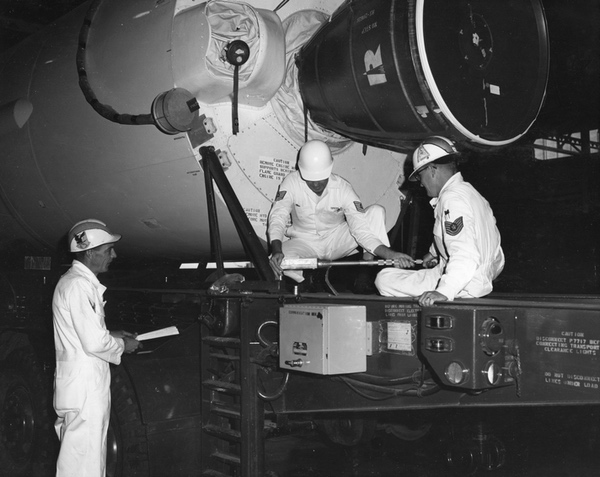 Thor had been built in the 1950s and withdrawn from missile duty by the early 1960s. Many of the missiles were converted to launch satellites. (credit: USAF) |
In December 1965, and January and March 1966, the Air Force tested the Program 437AP, for “alternative payload.” This was a camera system designed to photograph satellites in space when the 437AP payload was briefly within view of a target during its lofted trajectory. The first two flights failed, but the third was a success. Although the Air Force acknowledged in an official history that the payload was a camera system, and for the third mission the target was an American Agena spacecraft in orbit, few details have been released.
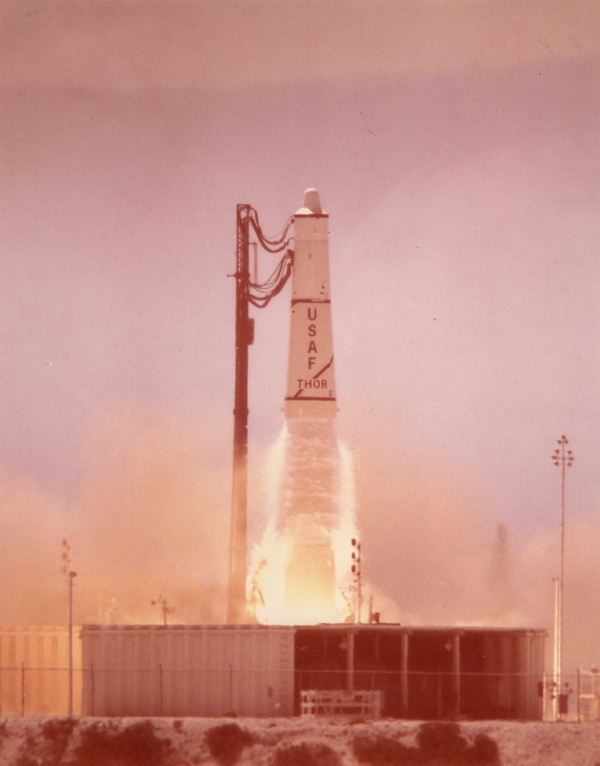 Launch of a Program 437AP spacecraft equipped with a camera for photographing spacecraft in flight. One successful AP mission was flown, but the system was severely limited in capability. (credit: USAF) |
Program 437 always had major limitations in terms of capabilities as well as location and resources. The Thor missiles were being used up by the Air Force during the 1960s, most of them converted to launch spacecraft. There was also the ever-present possibility that a storm could severely damage the launch site. By 1970, the program was put in standby status until it was finally ended in 1974 and removed from the island by 1975 (see “To attack or deter? The role of anti-satellite weapons,” The Space Review, April 20, 2020.)
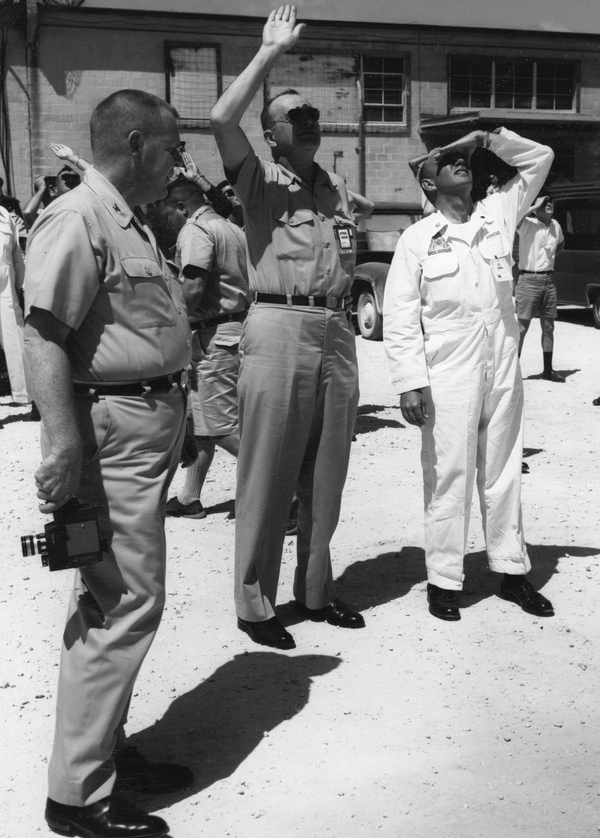 Johnston Island was so small that it was impossible to retreat to a safe distance during launches. The safety procedure was simple: Run. (credit: USAF) |
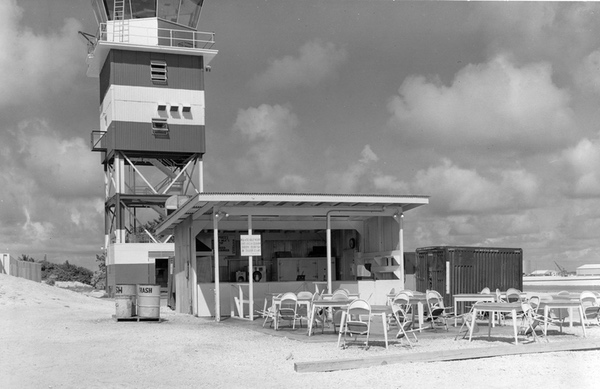 Johnston Island did not have much to offer its residents. This eating area was located next to the airfield tower, not far from the water. (credit: USAF) |
Aerial images of Johnston Island in its heyday give a sense of how small and crowded it was, but the reality for those assigned there must have been alarming. Flat as a pancake, a big typhoon could have scrubbed the island clean. Living and recreation quarters were located very close to the launch pads and their nuclear weapons. Exploding rockets could fall on personnel who had no safe locations to retreat to. Launch pad fires could pose threats to nearby structures and people. In 1962, a Thor missile with a nuclear weapon on top exploded and burned on the launch pad, spreading radioactive debris in the immediate area, which was not far from where hundreds of people were barracked. The radioactive wreckage was cleaned up, but everybody who worked there realized the dangers.
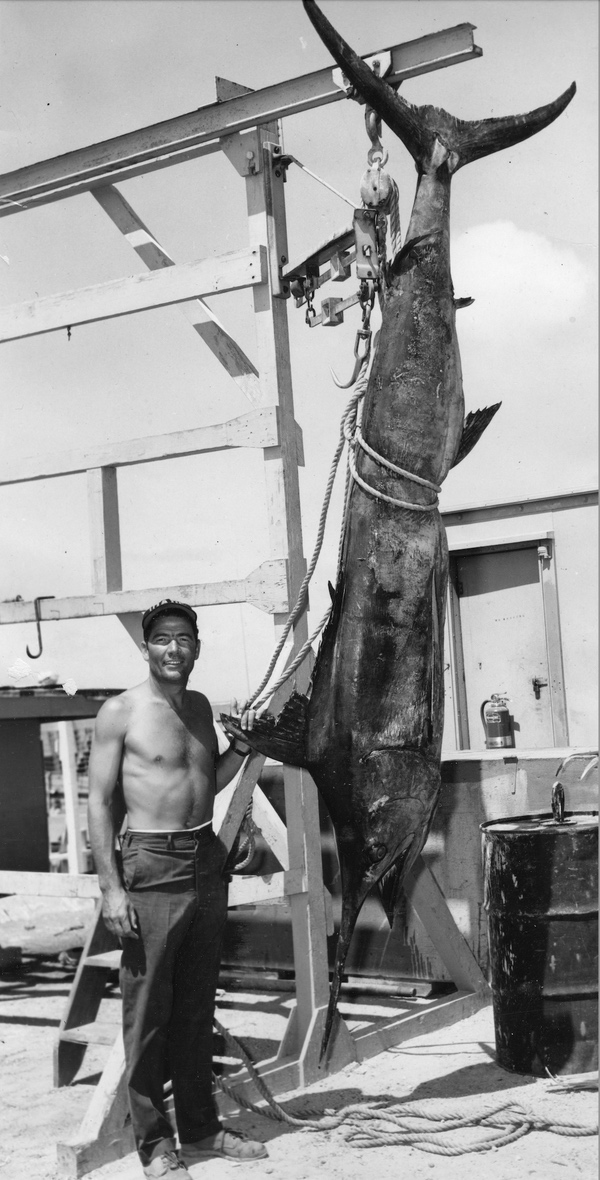 Scrapbooks kept by base personnel show lots of fish caught on the island, which was far out in the Pacific Ocean. (credit: USAF) |
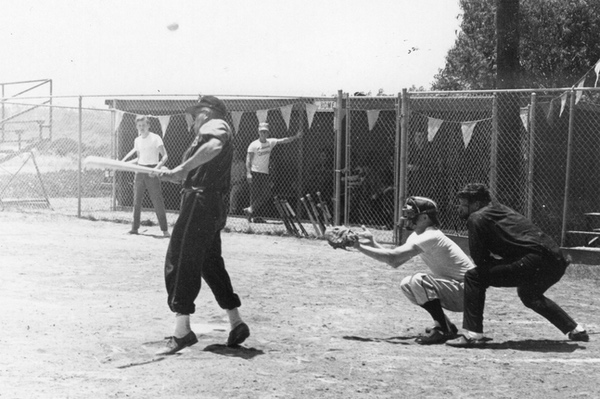 Softball was one of the few recreational activities on Johnston Island. (credit: USAF) |
Although official histories have captured the details of operations at the facility, photos provide some indication of what people did for entertainment. The options were relatively limited, mostly confined to fishing and softball. Base personnel competed to see who could catch the biggest fish. The island had at least one beach that was swimmable. A photo of the airmen’s lounge was perhaps intended to be ironic, showing four chairs and a television set. Viewing options were undoubtedly limited because the only signal came via satellite link.
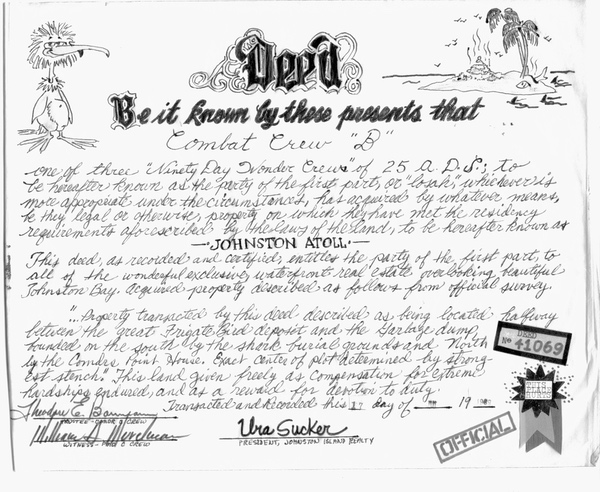 Serving on Johnston Island was not a desired posting. (credit: Joseph T. Page II) |
Perhaps the most telling images are a series of photos showing personnel lined up at the airfield to greet their replacements. In several photos they were holding up crude hand-made signs offering profane goodbyes to departing crews, and equally profane welcomes to the new arrivals. The nicest sign said “Smile – you were hand picked for this assignment.”
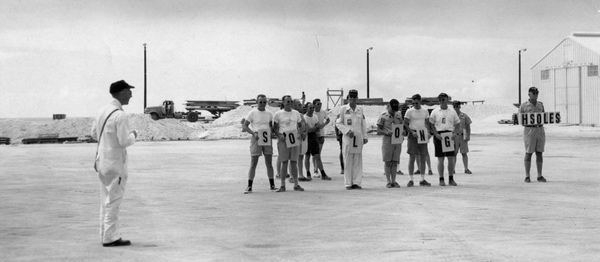 Johnston Island personnel bidding farewell to their compatriots. (credit: USAF) |
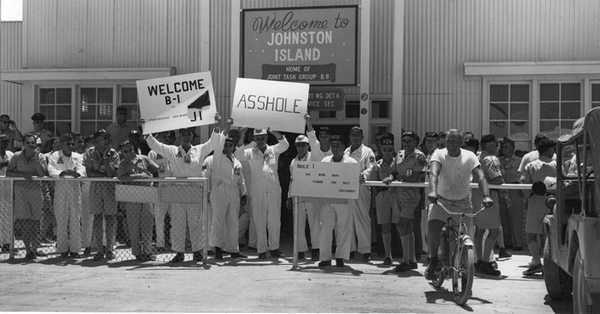 Military humor. (credit: USAF) |
Note: we are now moderating comments. There will be a delay in posting comments and no guarantee that all submitted comments will be posted.